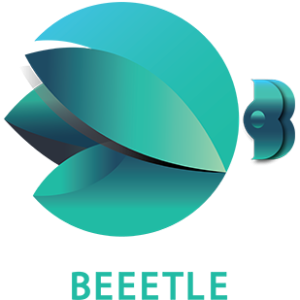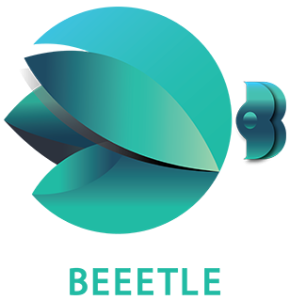Optimization of Product Category
Pages Using AI-based
SEO Strategy
- btle_admin
- March 7, 2022
- 12:16 pm
- No Comments
A good search engine optimization plan (SEO) requires a multifaceted approach (SERPS) to rank well in search engine results. In any SEO strategy, page categories are often overlooked. Here are some of the factors that can affect your rating, and what you can do to improve it.
Since the content is too long, we have kept following internal links to make it easy for our readers :
- Best Practices for eCommerce Category Pages
- Use AI for Effective SEO Strategy
What are page categories?
A site’s structure or taxonomy depends on the categories of its pages. The goal of keywords is to organize information, assist visitors in navigating the site, and help search engine crawlers determine your site’s objective.
Consider a meal delivery service. As a best practice, you can use keywords in page names and URLs. “Plant-based options,” “family favorites,” “meals for one,” and “gluten-free dishes” are examples.
Hierarchies of parent-child pages as well as top-level categories and subcategories are common in page categories. Accordingly, “Plant-based Options,” “Low-Sodium Dishes,” and “Reduced-Fat Entrees” could be the child categories of “Ready In Less Than 30 Minutes.”
Are there any ways to improve the page categories?
Making category pages optimized pays off requires a well-thought-out plan and expert assistance. Below are some suggestions to get you started.
SEO Best Practices for eCommerce Category Pages
Let’s talk about SEO for category pages.
It is generally true that search engine optimization does not require vastly different tactics for different types of pages. Keeping your site as inflexible and boilerplate as possible, on the other hand, is a fantastic way to waste time. It is best to tailor your strategy to achieve the best results.
This is why it is worthwhile to perform SEO for category pages and eCommerce product category pages. Knowing your searchers’ wants and tailoring your site’s content to match your target keywords will remain your default strategy.
In what way does the category page serve its purpose? SEO is extremely crucial. We wonder why we should create sites at mid-funnel where users may spend just a few seconds? If they’re just a step between your customers and the purchase, why should you worry about category pages?
- SEO Shopping Funnel
SEO for eCommerce category pages is also important because they are a critical step in the SEO funnel.
Using an effective search-focused digital marketing strategy, businesses can increase the number of visitors from the “curious shopper” stage to the “click on buy” stage. You can boost your category pages’ power to drive traffic on their own by optimizing them for high-quality, informative, and user-friendly content. By using this approach, visitors will be helped along their journey, and your category pages will receive more search traffic through their own content. It could range from increasing brand awareness to increasing direct sales revenue.
An exceptional category page SEO strategy uses both head and medium-length keywords to promote your business to buyers who are still considering their options. These services include technical site optimization, performance monitoring, algorithm tracking, and strategic SEO for fully-managed SEO. The advantages of working with an agency include the ability to develop key performance indicators (KPIs) tailored to your brand and a SEO strategy that targets your ICP along the purchasing funnel.
- Taxonomy and site structure
Site structure and taxonomy are important components of modern search engine optimization. Websites that aim to optimize SEO for eCommerce category pages can benefit from using an intuitive user interface. A fundamental SEO strategy for eCommerce sites is to build intuitive categories and product taxonomies.
When it comes to search engine optimization for category pages, there isn’t a right or wrong style of site or nav bar. “Flat” sites have most of their pages available from the homepage or navigation bar, whereas “deep” sites require users to browse through a number of navigation/category pages before accessing the deepest hidden areas.
Taxonomy, structure, and navigation bars often include the following:
- Flat horizontal menus
- Mega menus with a plethora of category pages
- Drop down menus with flyouts
- Footer links/site pages
- HTML sitemaps
- XML sitemaps and index sitemaps
- Bread crumb links on individual pages
- Plus a lot more
- Searcher intent and needs met
In search marketing, terminology like “needs met” and “Google search intent” is becoming increasingly important.
In category page SEO, this means targeting keywords where your products may truly satisfy the intent behind the search, based on behaviors and dispositions of individuals.
When users type a query into search engines like Google or Bing, their primary aims are represented by search intent or keyword intent. In the case of eCommerce enterprises, the ultimate goal comes down to making a purchase. eCommerce businesses and SEO for eCommerce category sites place a significant emphasis on keywords that express the intention of the searcher.
- Optimized title-tags and meta data
Businesses that want to grow their eCommerce sales and increase organic traffic must understand how meta-data optimization works. Finding the best SEO services includes receiving professional level metadata optimization.
The meta page title is an important ranking criterion in search engines, while the meta description (which is not a ranking factor) is crucial in determining click-through rates.
The best way to improve organic traffic to your site is by optimising title tags, so having a staff to manage your meta-data writing is essential for better SEO!
- Content best practices
We all know that content is king. For higher category SEO results, content not only increases traffic, but also increases sales and can please customers if it is done correctly.
Content is at the core of web marketing, and search engine crawlers use it to determine what your site is all about. Make sure you include relevant information about your products or subject matter.
The following are best practices to improve SEO content, which should be your brand’s primary resource:
- Build an informative website, and write category pages that summarize your content clearly and accurately.
- Be aware of the keywords users would use to find your category pages, and ensure that they are present on your site.
- To help Google fully understand your site’s contents, allow any site components that would significantly change page rendering to be crawled – CSS, JavaScript, etc.
- Display the most important content on your site by default. Google may scan HTML content hidden behind navigational elements like tabs and expanding sections, but this content is less accessible to consumers and should appear in the default page view.
- Make sure to use words rather than photos to display important names, category page content, or links. For textual material, provide a few words of descriptive text in the alt attribute.
- Schema markup
A well-crafted schema markup can increase a company’s click-through rate (CTR) and traffic from search engine results pages (or “SERPs”) by a significant margin.
Best On-page search engine marketing involves introducing structured data or schema markup code to a category/product page. It is important to understand that schema (also known as structured data) does not affect search engine ranking.
By using schema markup, search engines can include information such as:
- Product details and eCommerce information
- Breadcrumb information or category information for easier navigation
- Item lists/product listing pages
- Product pricing
- Inventory status
- Product description
- Manufacturer
- User review information/ratings
- And more
- UX and technical SEO for category pages
Understanding the importance of user experience in category page SEO is more important than ever.
Google’s “core web vitals” for user-experience SEO are based on a wide range of factors, including mobile-friendliness, navigation, and site-speed indicators. According to Google’s Chrome team, the basic web vitals comprise three indicators. LCP (Largest Contentful Paint), FID (First Input Delay), and CLS (Cumulative Layout Shift) are the three measures.
Mobile compatibility, safer web browsing, HTTPS security, and a reduction in interstitial advertising are among its efforts to make websites more user-friendly. Improving these areas of your site is important not only for user experience, but also for improving SEO for product category pages.
Artificial Intelligence will have a significant impact on the way search engines operate in several ways. Listed below are the top seven.
Artificial intelligence (AI) refers to a method of using machines to solve problems and make decisions. Initially, AI was used to develop machine learning algorithms in computers. The use of AI allows tasks to be completed without the need for explicit customization. The use of AI SEO, or Artificial Intelligence Search Engine Optimization, makes it easier for search engines to rank items like videos and pictures. AI allows Google to focus on human behaviour and searcher associations with its site, and use this information to influence their results. We will discuss the top ten ways AI can be used to develop an effective SEO strategy in this blog.
- Text and Voice Search in AI SEO
Search engine optimization (SEO) for voice assistants is the process of optimizing keywords and keyword phrases. Artificial intelligence will recognize your voice, and your inquiry will then be entered into a search engine. It is trusted by search engines like Google to provide meaningful and reliable results to clients’ search requests based on Artificial Intelligence. Using Artificial Intelligence, deep learning, and machine learning, search engines carry out searches and then determine which results will answer the user’s query.
- Content optimization, keyword research, and topic research
Using artificial intelligence (AI), experts in search engine optimization (SEO) separate topics from search results so that you can determine which destinations rank first for a given query. The use of artificial intelligence is useful for finding patterns in large sets of data with a high search volume. It is possible to analyze high-ranking content with AI and understand what makes it so successful.
- Creation of Topic Clusters and Pillar Pages
AI is used to make the creation of pillar sites and topic clusters easier, because it is a legitimate SEO approach that assists marketers in creating content for the given classification. An AI tool, HubSpot, includes AI capabilities in its marketing automation stage. It is a method of understanding the themes that online search tools associate with your content, in order to recommend an optimal support point to capture search traffic.
- Smart Content
AI automation can be used to continuously optimize for transformations, revealing the true potential of smart content. “Classy AI,” or “machine learning,” refers to your material’s ability to seamlessly adapt to each new client search based on the progress of previous clients.
- Enhances the visibility of the brand and business productivity
Properly implementing AI on your site will assist you in rising to the top of various internet search programme sites. Using AI SEO, you can take your company to the maximum level and make it more useful. Clients only see the featured businesses on the first page of the Internet search tool. It means that a higher ranking will increase your company’s chances of being seen by Internet users.
- Creates powerful analytics and reporting
AI SEO makes your work as an entrepreneur easier by allowing you to track the success of your company’s online presence. Using Artificial Intelligence, you can create a successful strategy for managing your online orders by analyzing precise analytics and data.
- Shapes your company’s digital marketing strategy
AI SEO will transform the way you manage advanced advertising. The reports generated by AI for SEO tools can be used to identify an information-based marketing approach for your products.
Improve your results by considering the categories of your pages. While they aren’t the only deciding factor, this approach will help you make positive changes. Having them will improve a site’s ranking on the SERPs and demonstrate to users that you have an interesting and useful website.
Many companies realize that they can handle their own search engine optimization. A professional team can, however, assist online businesses in achieving greater results, growing revenue faster, and utilizing time more efficiently. Learn more about our digital marketing assistance and services. Our experts can assist you in growing your business online using tried-and-true methods.
Popular Categories
Newsletter
Get free tips and resources right in your inbox, along with 10,000+ others





